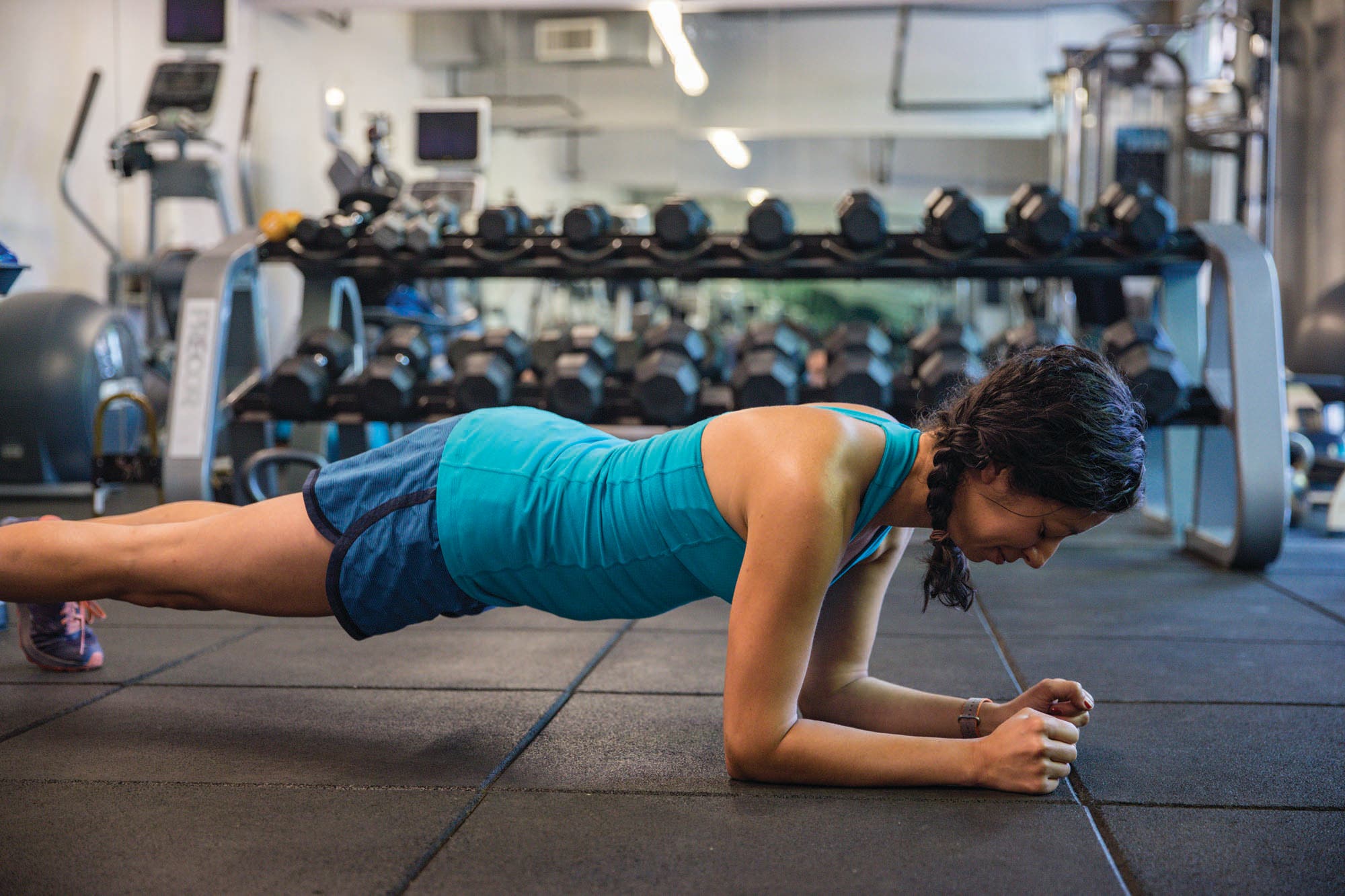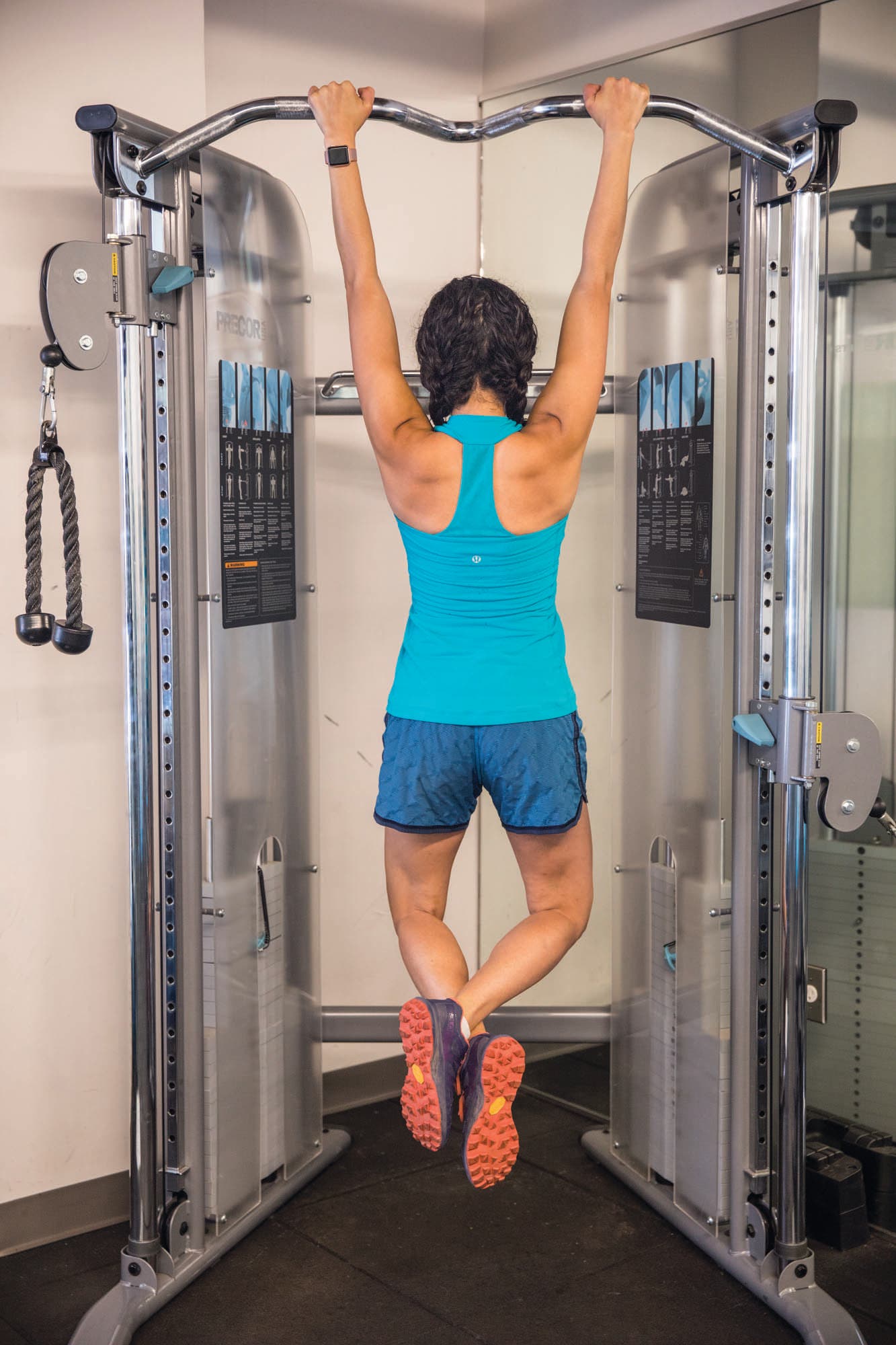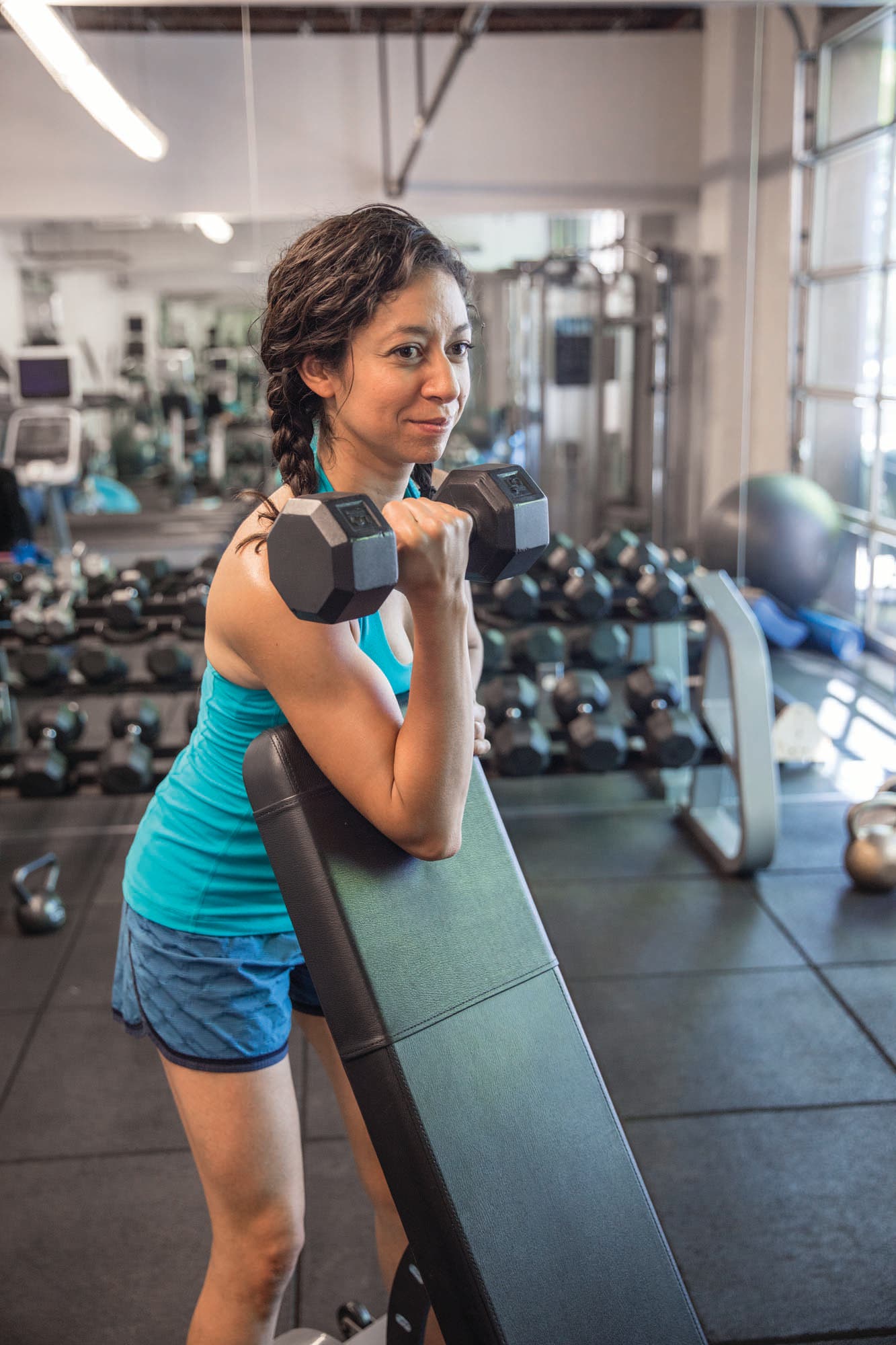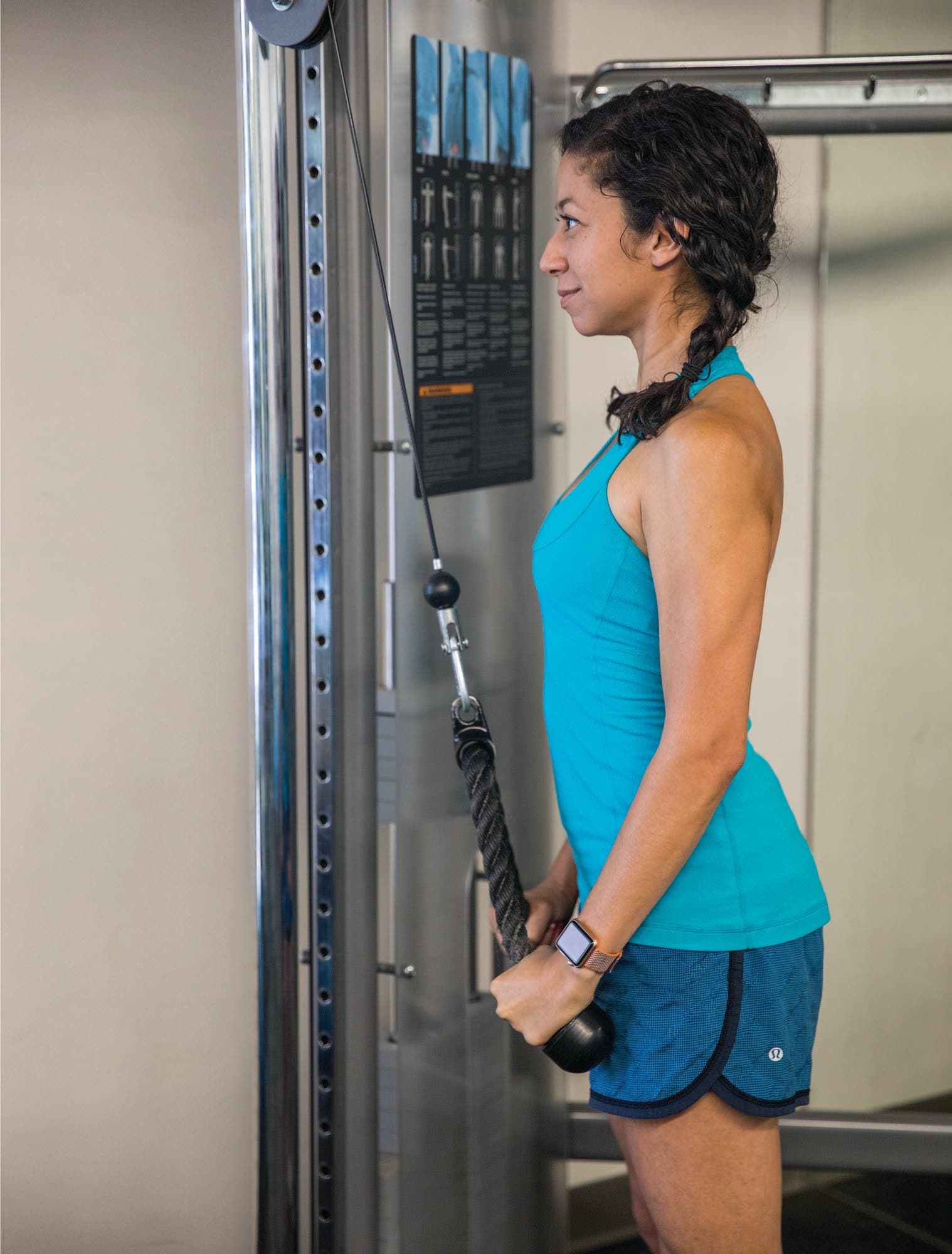4 Arm Exercises Every Backpacker Should Know

'Matt Coddaire'
Do backpackers really need strong arms? Consider this: Weak shoulders can lead to upper back pain, as well as neck and shoulder injuries from carrying a pack. Plus, you need upper body strength to use trekking poles, which can take up to 25 percent of the load off your knees. Do these exercises two to three times per week for two months before your next big trip to hit the trail with guns blazing.
Crawlers

What A dynamic plank that moves from hands to elbows
Why Strengthen your shoulder girdle (the muscles stretching from your clavicle to your shoulder and down below your armpit), triceps, and core for better control with trekking poles.
Reps 8 Sets 3 Rest 30 seconds
1. Get into a plank position with your arms straight and shoulders pushed back and downward toward your butt, keeping your chest open.
2. Bend the left arm (pictured), then the right, to get into forearm plank (elbows should be at a 90-degree angle to both the floor and your shoulder). Pause for two seconds.
3. Lift your left hand and press your palm into the floor where your left elbow just was. Maintaining alignment will properly stabilize your shoulder joint.
4. Repeat with your right hand, returning to a straight-arm plank position.
5. Repeat in reverse, starting with your right arm.
Make it harder: Use a Bosu ball. Position the ball under your hands, flat side down.
Shoulder Shrugs

What A simple hanging exercise
Why Strengthen forearms for scrambling, and rear deltoids and rotator cuffs to build up weight-bearing shoulder strength.
Reps 10 Sets 3 Rest 30 seconds
1. Hang from a pull-up bar. Keep your chest open and shoulders drawn backward (imagine holding a pen between your shoulder blades).
2. For two seconds, slowly draw your shoulders downward toward your glutes (pictured).
3. Pause for two counts and release slowly for two counts.
Make it harder: Add a rep each week.
Standing Preacher Curls

What Angled, standing arm curl
Why Isolate your biceps and forearm flexor muscles for even development across your arm to prevent tendonitis from repetitive use of trekking poles.
Reps 10 (each side) Sets 3 Rest 30 seconds
1. Stand behind a bench angled at 45 degrees. Keep a wide stance, tuck in your tailbone, and engage lower abdominal muscles for better stability.
2. With a dumbbell in your right hand (start with 10 to 15 pounds), lean forward to place your entire arm against the backrest of the bench.
3. Engage your biceps and slowly curl the weight up to your shoulder (pictured). Keep your shoulder still and your upper arm against the bench.
4. Pause for one second and slowly lower back to the starting position. Do 10 reps, then switch arms.
Make it harder: Increase the weight or reps by 10 percent each week.
Triceps Push-Downs

What A traditional push-down movement
Why Develop triceps for better scrambling and balanced arm strength.
Reps 10 Sets 3 Rest 30 seconds
1. Install the triceps attachment (two balls connected with a rope or a V-shaped bar) on a cable machine and add a 10-pound plate.
2. Stand, with back straight and abs engaged, about 2 feet away from the cable machine with the attachment at eye level.
3. Grasp the attachment with both hands, keeping palms facing inward, your arms bent, and your elbows tight to your sides and slightly behind your ribs. You should feel tension in the cable throughout the entire workout.
4. Push straight down toward the floor for two counts. Your arms will be extended slightly in front of you, but keep your shoulders back and elbows next to or slightly behind your ribs.
5. Hold for two counts, then release slowly for two counts.
Make it harder: Increase weight or reps by 10 percent each week.
The Expert
Former professional obstacle course racer Robyn Fog now trains long-distance backpackers and mountaineers, including the first below-the-knee amputee to summit Mt. Everest. She owns Colorado-based Hypermobility Exercise Solutions.